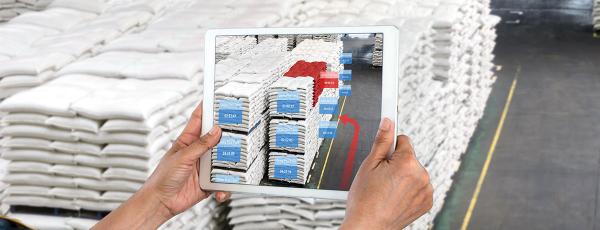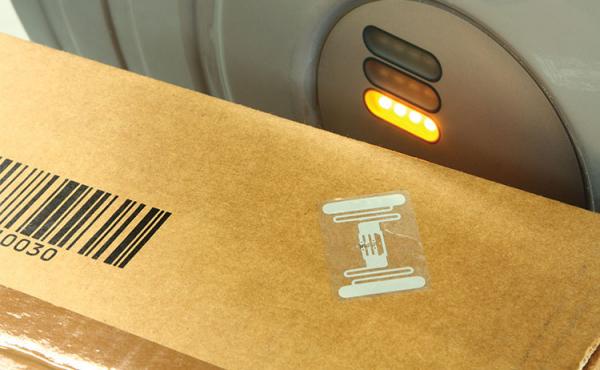UPDATED 2023
What do managers in materials handling, warehousing and logistics need to know to ensure their systems are as efficient as they can be? How do they avoid drowning in a tidal wave of data? Ruari McCallion has been looking at the technology.
Welcome to Industry 4.0
Getting information is one thing; getting useful information is another. ‘Industry 4.0’, the phrase that seems to be everywhere, is founded on data. It is not just ‘smart factories’ that need to deal with data: warehouse management, logistics and materials handling are very much affected too.
The main goal of Industry 4.0 in supply chain management is to foster the intelligent networking of products and processes along the value chain.
With rapid advancements in analytics and machine learning (ML), companies have the power to actively examine transactional data in near real-time and use the insights derived to plug gaps and remedy revenue losses. With increasing complexity, materials handling functions cannot be dealt with using established planning and control practices.
Opportunities and challenges
Industry 4.0 technologies increase transparency, which means that performance across the entire value chain – including that of partners and suppliers – is becoming more visible. While decision-making will be more collaborative and efficient, machines are being enabled to make decisions and perform learning activities autonomously, based on man-made algorithms.
The technological organisation of logistics will change with the implementation of BI technologies, smartphone apps, AIDC (automatic identification and data capture) and RFID technologies (radio-frequency identification), and the miniaturisation of electronics.
A core task of ‘smart’ logistics and supply chain management is adding the right level of autonomy and intelligence to make it more efficient, effective, connected, agile and flexible. The right balance must be struck between semi-autonomous systems and human involvement, including ‘cobot’ working, automation and planning.
The booming availability of data is itself a challenge. From RFID to HMIs, (human-machine interface) through machine-mounted lubrication sensors, every little connector is either already equipped or capable of being equipped to provide data. How do we identify and discriminate between that which is vital, that which is important, that which is merely interesting and that which is clutter? How do we make best use of what really matters in materials handling?
Time to start again?
While it’s fair to acknowledge that some investment in systems will be needed, a lot of hardware is already in place – like the sensors, RFID systems and connectors mentioned above; as well as automated conveyors and AGVs (automated guided vehicles).
Those sensors and automatic aids are all collecting data on location, machine capacity and condition, availability and progress, on goods’ location, source and destination, and so on. But the average warehousing or logistics operation may not be capturing it. They may be also asking why they would need to, when things are fine right now as they are.
“Universal access to the internet, changing consumer preferences, new business models, and a wholesale reinvention of retail stores are changing the industry,” says Guy Courtin, GT Nexus Vice President, Industry Solution and Strategy, Retail. He points out that legacy warehouse management systems were built to handle the traditional linear movement of goods in the supply chain.
“They manage processes within the four walls of a warehouse, receive inventory, and facilitate its distribution to stores. Within that scope, most legacy systems get the job done.”
2025 Vision
But that is not good enough for the future. By 2025, the smart factory will be a reality, actively integrating humans and machines in combined cyber systems. Logistics and warehouse management must adopt the same technologies, so that value gained within smart factories will not be lost in the spaces outside their walls.
Industry 4.0 technology unlocks and shares the information collected by sensors, RFID, tags, inspection equipment, etc. Machines equipped with AI use on-board sensor intelligence combined with better connectivity to enable sensors to trigger actions based on what they ‘see’. Automated systems can decide, themselves, on appropriate changes or responses to, for example, product line changes on a conveyor, thus enabling accommodation of smaller batch sizes.
Performance and speed are crucial, but so is quality – and the ability to handle multi-channel fulfilment demands, both now and in the future.
Make your data usable
But all of this depends on converting the data into a useful form. Data analytics covers the qualitative and quantitative techniques and processes used to enhance productivity and business gain. Data is extracted and categorised to identify and analyse behaviour and patterns. It’s ultimately a software solution, which may well be integrated into an organisation’s ERP (enterprise resource planning) system. Is it worth it?
Today’s supply chain is a complex network of many different stakeholders. While consumers are concerned with the price and speed of delivery, logistics managers and materials handling professionals are having to deal with additional complexity and cost in the warehouse. Higher order volumes, more inventory touches, increased velocity and rising pay rates make the job of order fulfilment more difficult. The response has been heavy customisation of legacy software, and asking more of the personnel, but outdated systems will inevitably struggle.
“Warehouse management software must address three distinct areas of need: facilities, orders and labour,” Guy Courtin says. According to Statista, around 1.66 billion people made online purchases in 2017 and that number is expected to rise by about 30%, to 2.14 billion, by 2021.
Digitise your supply chain
There is no ‘quick fix’ to transform an entire supply chain towards a more connected and efficient model.
Essentra Components invested £150,000 in TW Pick and Pack and warehouse management software to drive picking and delivery accuracy, giving employees better access to warehouse activity data and management information. The company is planning to introduce improved location management to reduce the delay between available and picked product and accurately track stock.
“We have seen an increase in near real-time data that logistics providers collect through various sources, such as sensors, smartphones and B2B (business-to-business) data exchanges,” says Renuka Pahuja, Manager at The Smart Cube, a global professional services company that specialises in procurement, analytics and research. It has offices in India, the UK, Romania, Switzerland and the USA. “Logistics companies are leveraging Big Data analytics to generate insights and make better strategic and real-time decisions to gain competitive advantage.”
Data sources used by Smart Cube to provide intelligence to clients include: weblogs, which give insights into customer shopping patterns; trailer tags; pallet/case/SKU tags; electronic on-board recorders; mobile devices; and even social media platforms.
Are you ready for this?
“Data capture systems provide real-time visibility into warehouse processes, including quality check imaging solutions, barcode scanning and product dimensioning systems,” Renuka Pahuja continues. In this new world, wearable tech devices assist in order fulfilment, and augmented reality and voice devices help increase picking efficiency and order accuracy, while robots and AGVs streamline palletising, depalletising, picking and packing operations. New-generation supply-chain and warehouse management is about using flexible, smart supply chain decisions, enabled by the human, organisational and technological components of Industry 4.0 and logistics 4.0. These are needed to make the difference in gaining competitive benefits, and even simply to survive in a hyper-connected age. Performance and speed are crucial, but so is quality – and the ability to handle multi-channel fulfilment demands, both now and in the future.
If you would like to read the unabridged article by Ruari McCallion please visit Eureka, the online magazine for the materials handling professional: http://eurekapub.eu/technology/2018/11/01/control-the-data-tsunami



